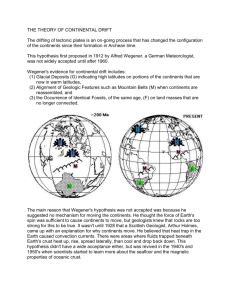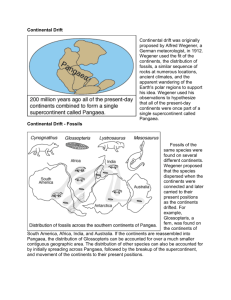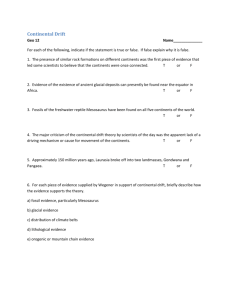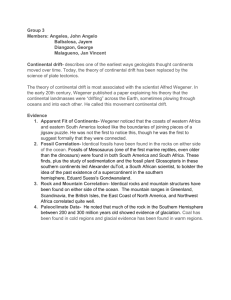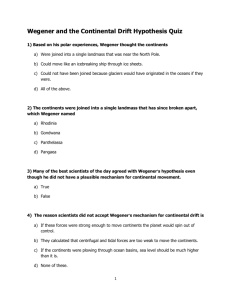7-1 continental drift outline worksheet answers
advertisement
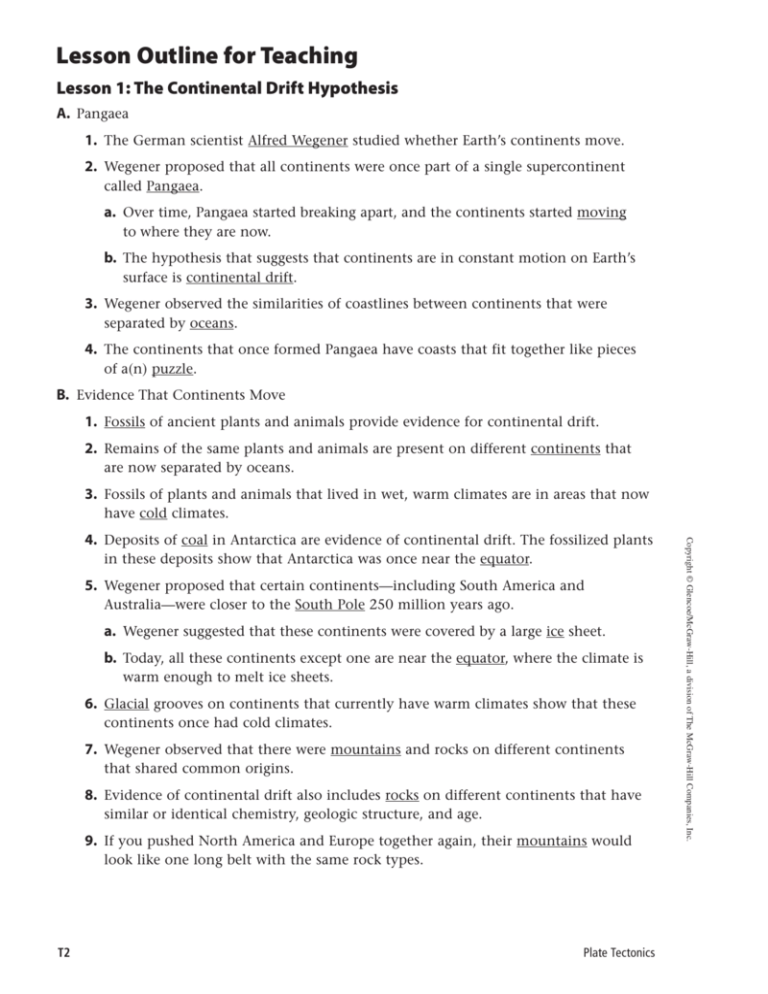
Lesson Outline for Teaching Lesson 1: The Continental Drift Hypothesis A. Pangaea 1. The German scientist Alfred Wegener studied whether Earth’s continents move. 2. Wegener proposed that all continents were once part of a single supercontinent called Pangaea. a. Over time, Pangaea started breaking apart, and the continents started moving to where they are now. b. The hypothesis that suggests that continents are in constant motion on Earth’s surface is continental drift. 3. Wegener observed the similarities of coastlines between continents that were separated by oceans. 4. The continents that once formed Pangaea have coasts that fit together like pieces of a(n) puzzle. B. Evidence That Continents Move 1. Fossils of ancient plants and animals provide evidence for continental drift. 2. Remains of the same plants and animals are present on different continents that are now separated by oceans. 3. Fossils of plants and animals that lived in wet, warm climates are in areas that now have cold climates. in these deposits show that Antarctica was once near the equator. 5. Wegener proposed that certain continents—including South America and Australia—were closer to the South Pole 250 million years ago. a. Wegener suggested that these continents were covered by a large ice sheet. b. Today, all these continents except one are near the equator, where the climate is warm enough to melt ice sheets. 6. Glacial grooves on continents that currently have warm climates show that these continents once had cold climates. 7. Wegener observed that there were mountains and rocks on different continents that shared common origins. 8. Evidence of continental drift also includes rocks on different continents that have similar or identical chemistry, geologic structure, and age. 9. If you pushed North America and Europe together again, their mountains would look like one long belt with the same rock types. T2 Plate Tectonics Copyright © Glencoe/McGraw-Hill, a division of The McGraw-Hill Companies, Inc. 4. Deposits of coal in Antarctica are evidence of continental drift. The fossilized plants Lesson Outline continued C. What was missing? 1. Scientists questioned continental drift because it is such a(n) slow process. They were unable to measure how fast the continents moved. 2. Wegener could not explain what forces causes the continents to move. 3. Additional scientific evidence to prove Wegener’s hypothesis existed on the seafloor between the drifting continents. 4. Evidence to prove continental drift was discussed decades after Wegener’s death. Discussion Question Are similar fossils more likely to exist on Asia and South America or on Africa and South America? Copyright © Glencoe/McGraw-Hill, a division of The McGraw-Hill Companies, Inc. According to the shapes of their shorelines, it is likely that Africa and South America were next to each other in Pangaea. Asia and South America did not touch. Therefore, it is more likely that Africa and South America might have similar fossils. Plate Tectonics T3


